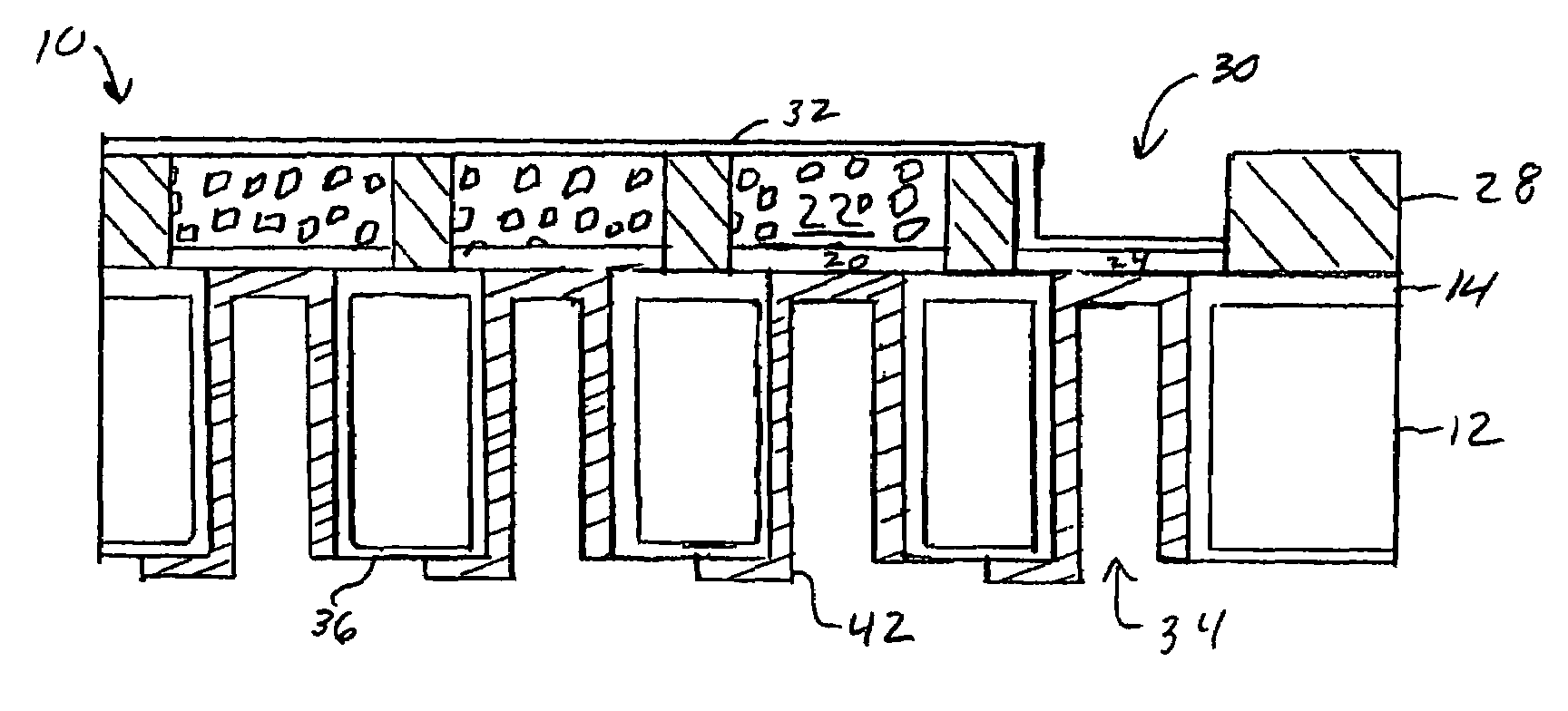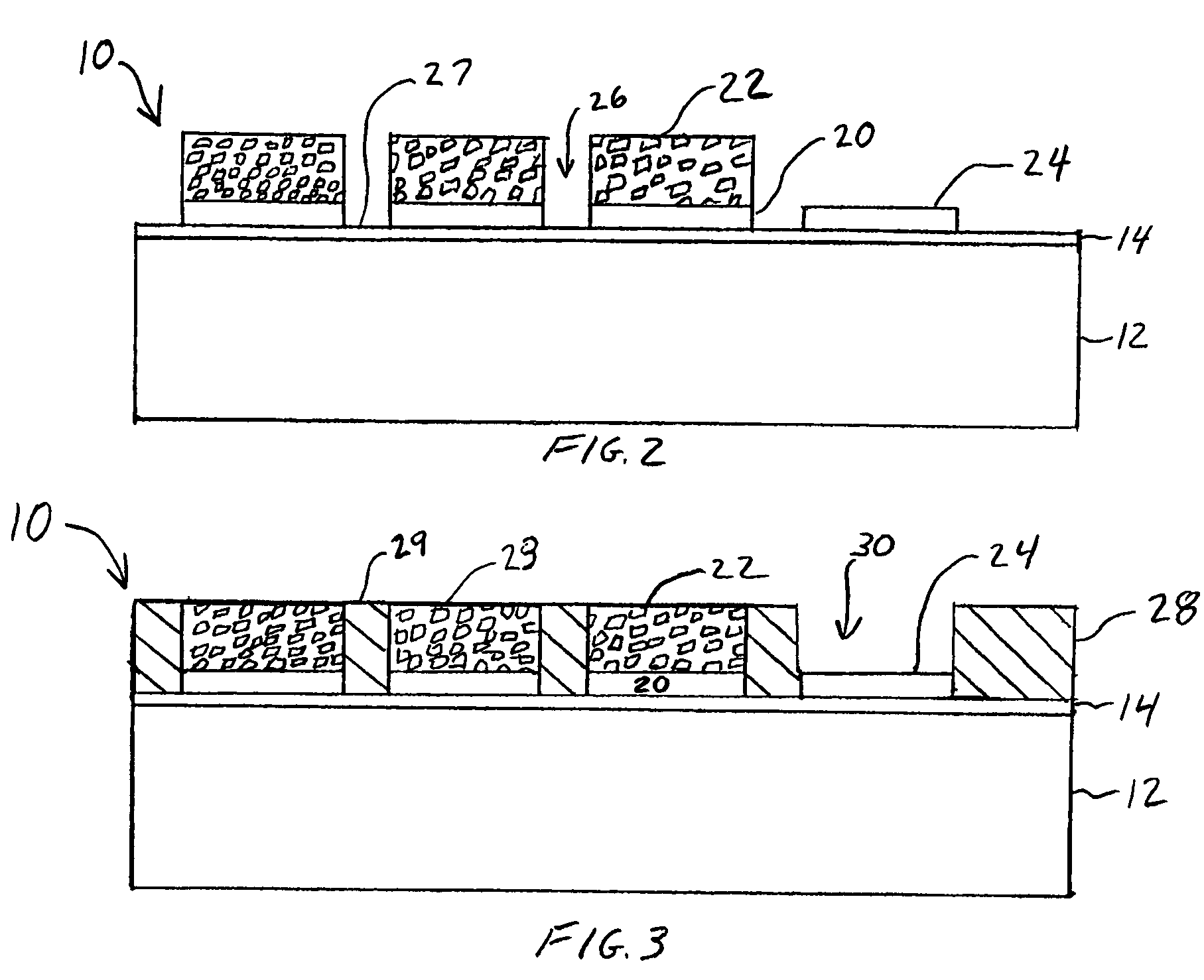Piezoelectric micromachined ultrasonic transducer with air-backed cavities
a micro-machined, ultrasonic transducer technology, applied in ultrasonic/sonic/infrasonic diagnostics, mechanical vibration separation, application, etc., can solve the problem of relative high resistivity polysilicon, compared, and the signal to noise ratio can be problematic during the operation of the cmut, so as to improve the impedance match, the effect of high signal to noise ratio and high bandwidth
- Summary
- Abstract
- Description
- Claims
- Application Information
AI Technical Summary
Benefits of technology
Problems solved by technology
Method used
Image
Examples
Embodiment Construction
[0025]The invention will be described in conjunction with the formation of the pMUT devices illustrated in the accompanying drawings. However, this is exemplary only as the claimed invention is not limited to the formation of the specific devices illustrated in the drawings.
[0026]A method of forming a vertically integrated pMUT device according to certain embodiments of the present invention is described. A pMUT device structure 10 comprising a substrate 12 is provided, as illustrated in FIG. 1A. According to certain embodiments of the present invention, the substrate 12 is a silicon wafer. A first dielectric film 14 is formed on the substrate 12. In certain embodiments of the present invention, the first dielectric film 14 comprises silicon oxide or silicon nitride. A bottom electrode layer 16 is formed overlying the first dielectric film 14. According to certain embodiments of the present invention, the bottom electrode layer 16 can comprise a metal or conductive metal oxide. A la...
PUM
 Login to View More
Login to View More Abstract
Description
Claims
Application Information
 Login to View More
Login to View More - R&D
- Intellectual Property
- Life Sciences
- Materials
- Tech Scout
- Unparalleled Data Quality
- Higher Quality Content
- 60% Fewer Hallucinations
Browse by: Latest US Patents, China's latest patents, Technical Efficacy Thesaurus, Application Domain, Technology Topic, Popular Technical Reports.
© 2025 PatSnap. All rights reserved.Legal|Privacy policy|Modern Slavery Act Transparency Statement|Sitemap|About US| Contact US: help@patsnap.com



